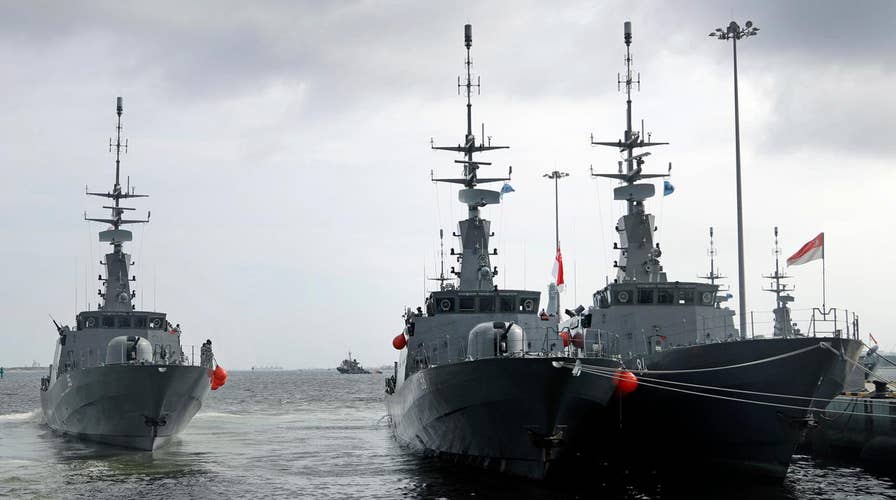Is the US Navy facing a readiness crisis?
On 'America's Newsroom,' Rep. Adam Kinzinger reacts as deadly accidents spark concern
The remains of three Marines killed in a plane crash off the east coast of Australia earlier this month have been discovered, the U.S. Marine Corps announced Friday.
The discovery follows a series of incidents that have “damaged” the reputation of the armed forces, one lawmaker said.
Capt. Benjamin R. Cross, Cpl. Nathaniel F. Ordway and Lance Cpl. Ruben P. Velasco were killed when their MV-22 Osprey, an aircraft that is part helicopter, part plane, crashed into the back of a U.S. Navy warship during a training mission on Aug. 5.
Some 23 other Marines on board were rescued.
It was the second deadly crash of a Marine Corps aircraft since July, when a Marine cargo plane crashed in the Mississippi Delta, killing all 16 on board.
The Marine Corps grounded all of its roughly 850 aircraft earlier this month as a result of the two crashes.
Last week, an Army Black Hawk crashed in waters off Hawaii, killing all five aboard.
A total of 24 service members have been killed in the three non-combat aviation crashes since July.
This comes as the Navy is mourning the loss of 17 sailors following two crashes in the Pacific of guided-missile destroyers. More U.S. service members have been killed in the two collisions at sea then have been killed in Afghanistan this year.
MARINES CORPS ORDERS ALL OF ITS AIRCRAFT GROUNDED FOLLOWING DEADLY CRASHES
Lawmakers on Capitol Hill are questioning whether years of budget cuts are taking a toll on the U.S. military, forced to expand their missions due to rising threats around the world, but with fewer ships and aircraft.
In the mid-80s, there were roughly 600 U.S. Navy ships. Today, there are 271, following the loss of USS John S. McCain and USS Fitzgerald. Both Japan-based 7th Fleet destroyers are capable of shooting down North Korean ballistic missiles. The Navy is looking at moving more warships to Japan to make up for the loss.
"It does a damage to our reputation," Rep. Adam Kinzinger, R-Ill., told Fox News’ Leland Vittert Friday morning, reacting to the deadly collisions of two anti-ballistic, missile-capable Navy destroyers in the Pacific since June.
The civilian head of the U.S. Air Force says her service also has suffered as a result of budget cuts.
"So some of the missions... we're not as ready," said Air Force Secretary Heather Wilson. "That doesn't mean we won't go, it means fewer will come back. And I think we need to understand that," she told Pentagon reporters Friday.
Last month the Navy grounded all 10 F-18 Hornets from VFA-37 aboard the USS George H.W. Bush for a week during the ISIS fight after two pilots flying older model F-18C Hornets fell ill with decompression sickness -- a long-standing problem with the jet’s cabin pressure.
The two pilots required treatment in a decompression-chamber-like machine.
The USS George H.W. Bush was the first aircraft carrier to deploy with a chamber aboard after a spike in what the Navy calls "physiological episodes," that many officials blame on flying old planes.
Every deployed aircraft carrier in the U.S. Navy now carries decompression chambers aboard.
And on Friday, the Military Times reported only 28 of the U.S. Navy's T-45 trainer jets in Texas could evacuate from the path of Hurricane Harvey. Seventy-one jets were placed in hangars to avoid the storm's path, but officials are concerned about potential flooding that could damage the jets.
In April, more than 100 U.S. Navy instructor pilots refused to fly the T-45 in protest of what they say is the refusal of top brass to adequately address an urgent problem with training jets’ oxygen system, multiple instructors told Fox News.
“The pilots don’t feel safe flying this aircraft,” one pilot said at the time.
Fox News' Jennifer Griffin contributed to this report.


